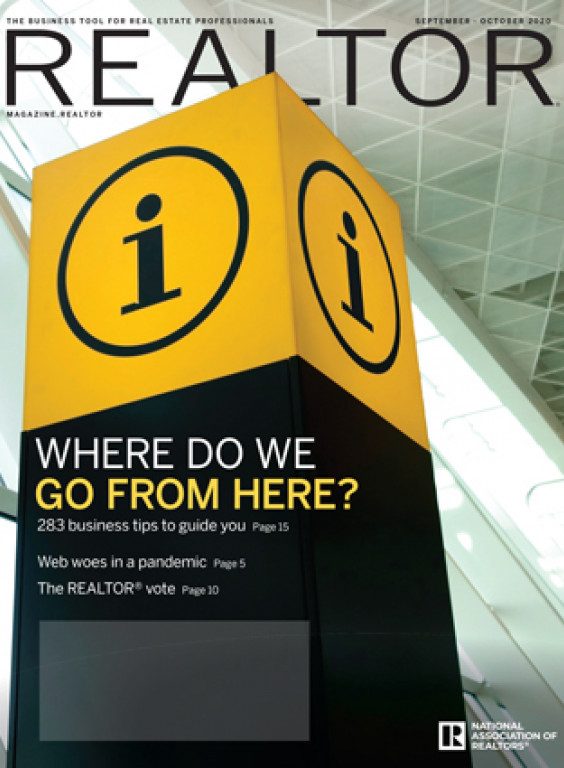As you’re likely doing more of your work these days from home, you’re aware how valuable your internet connection is as more aspects of the real estate business are conducted online. But for millions of Americans, high-speed broadband access remains out of reach either because the infrastructure is unavailable or because they can’t afford service.
For millions more, a state of underconnection means their home internet subscription cannot handle current demand, including routine uses such as watching Netflix movies, doing homework, and videoconferencing. These digital divides became painfully apparent at the onset of the COVID-19 pandemic when Americans migrated to living, working, and studying online at home.
This experience has brought to light five critical, and sometimes overlooked, truths about the need for reliable, affordable broadband access to support vibrant communities. Learning about how many places and individuals in the U.S. are underserved is the first step toward addressing the inequities.
Broadband availability affects home values. The Federal Communications Commission defines “broadband” as an internet connection with a minimum download speed of 25 megabits per second and a minimum upload speed of 3 mbps. At these basic speeds, people should be able simultaneously to stream movies, send an email, and post on social media without delay. Broadband drives economic activity: It can improve a community’s gross domestic product, lower unemployment, and raise wages. Businesses make decisions about relocation based on broadband availability, especially in rural areas. A fiber-to-the-home connection can raise a home’s value by 3%, according to a 2015 report by the nonprofit Fiber-to-the-Home Council. Another study, in 2017, found that disconnecting a home from broadband would decrease its value by 2.8%.
A lack of broadband hurts many sectors of daily life. While 70% of K-12 teachers assigned homework online prior to COVID-19, at least 15% of students lacked broadband. FCC Commissioner Jessica Rosenworcel has called this homework gap “the cruelest part of the digital divide.” Broadband’s role in medical applications is especially critical in rural and remote areas. Telehealth improves everything from paperwork to diagnosis. Broadband is vital to processes in agriculture, where the practice of precision agriculture depends on reliable wireless connections. It makes connecting with elected officials easy, thus enhancing civic engagement, and it helps first responders do their jobs, as was made apparent during the 2018 California wildfires, when Verizon throttled their data speeds.
The digital divide is worse in rural areas and for people of color. Americans without broadband fall into two buckets: those without access because the infrastructure is unavailable and those who do not subscribe, usually due to cost. The FCC reports that 21 million Americans lack access to broadband in the home, 80% of whom live in rural areas. But this figure may substantially underestimate the true scope of the gap. Because of errors in data collection, the correct number is likely twice that, according to a recent report by the company BroadbandNow. The National Digital Inclusion Alliance, a nonprofit advocacy group, estimates that another 18.5 million households go without broadband because of the subscription costs.
The digital divide looks worse through the lens of race: The nonpartisan Pew Research Center reports that 34% of Black adults and 39% of Latinx adults do not have home broadband, while the U.S. Census Bureau reports that 47% of those on tribal lands don’t have home broadband, compared to 21% of White adults who do not have home broadband.
Broadband may not live up to its name. Not all internet connections may count as “broadband” even when advertised as such by internet service providers. Microsoft estimated in 2018 that 162.8 million Americans, or 50% of the entire population, lack an internet connection at speeds meeting the FCC’s definition.
A satellite connection is unlikely to be robust enough to offer videoconferencing or streaming. Speeds on DSL networks, prominent in rural communities and provided by phone companies like CenturyLink, are also slow, with one study by Gallardo and Whitacre reporting that the median download and upload speeds of DSL in both urban and rural America do not meet the FCC’s broadband definition. Cable, provided by companies like Comcast Xfinity, is the most common type of connection in urban America. It offers fast download speeds perfect for binge-watching “Tiger King” during quarantine but can be plagued by network congestion during peak periods. The more people using the network at the same time, the slower it becomes.
A fiber optic connection (such as Ting) is the gold standard. It offers blazing fast download and upload speeds (1,000 mbps, or 1 gbps), which is perfect for pleasure and business. It can also handle a nearly unlimited amount of data, according to Susan Crawford, a law professor at Harvard University and the author of Fiber: The Coming Tech Revolution–and Why American Might Miss It. But fiber is expensive to install, at upwards of $27,000 per mile, which means that ISPs are laying fiber only in areas in which they expect the fastest return on their investment. About 30% of households have the option of fiber. The rest rely on older technologies—at least 60,000 farms still have to make do with dial-up internet access. Inadequate broadband limits the effectiveness of internet-based phone systems and creates hurdles for the important benefits the cloud brings for business communications.
Indeed, mobile phones are no replacement for fixed broadband. While 81% of Americans have a smartphone, mobile broadband comes with high subscription costs, low data caps, high overage costs, throttled data speeds, and inconsistent coverage. 5G, the next generation of mobile broadband, has been slow to meet expectations and has been rolled out only in select urban areas.
With the arrival of social distancing, ISPs experienced a surge in user demand, with Verizon reporting a 1,000% increase in the use of collaboration tools like Zoom during the first two months of lockdown compared with levels preceding COVID-19. Other studies also suggest America’s networks may be strained. Tech policy expert Sascha Meinrath of Penn State University noted that 62.2% of counties saw a median download speed below 25 mbps in the last two weeks of March 2020, at the height of stay-at-home orders. Similarly, Broadbandnow.com found that 44% of 200 cities surveyed experienced some degree of network speed degradation between March 15 and 21.
Mobile hot spots don’t meet demand. The pandemic has underscored the extremes that some people go to in order to stay connected, especially for schoolwork. Parents are driving their kids to McDonald’s parking lots to use the restaurant’s Wi-Fi for homework. Wi-Fi–enabled school buses have been deployed in some neighborhoods to provide connectivity. Schools and libraries are lending out hot spot devices and laptops when they can. The surging demand, according to Axios, has led to a shortage of mobile hot spots.
Recent federal measures are a start, but will have limited impact. ISPs have pledged to “keep America connected” during COVID-19, with low-priced plans and a promise not to disconnect those who surpass data caps or have outstanding bills. This is a stopgap solution to get through a crisis at best. The National Association of REALTORS® has long supported a comprehensive national policy to stimulate the deployment of broadband in underserved areas of the United States, increase data speeds, and lower broadband prices.
A measure in the recent $2 trillion CARES Act included $100 million for the ReConnect program that provides financing to facilitate the expansion of broadband services in underserved rural areas. It’s a small step given the $80 billion that the FCC estimated in 2017 would be needed to fully connect the entire country.
In late June, House Majority Whip James Clyburn introduced the Accessible, Affordable Internet for All Act, which allocates $100 billion for broadband deployment and access. That came on top of the Rural Broadband Acceleration Act, introduced in May, which would compel the Federal Communications Commission to jumpstart its $20.4 billion Rural Digital Opportunity Fund program and distribute funds to shovel-ready projects within the year. NAR has been a vocal champion of both bills.






